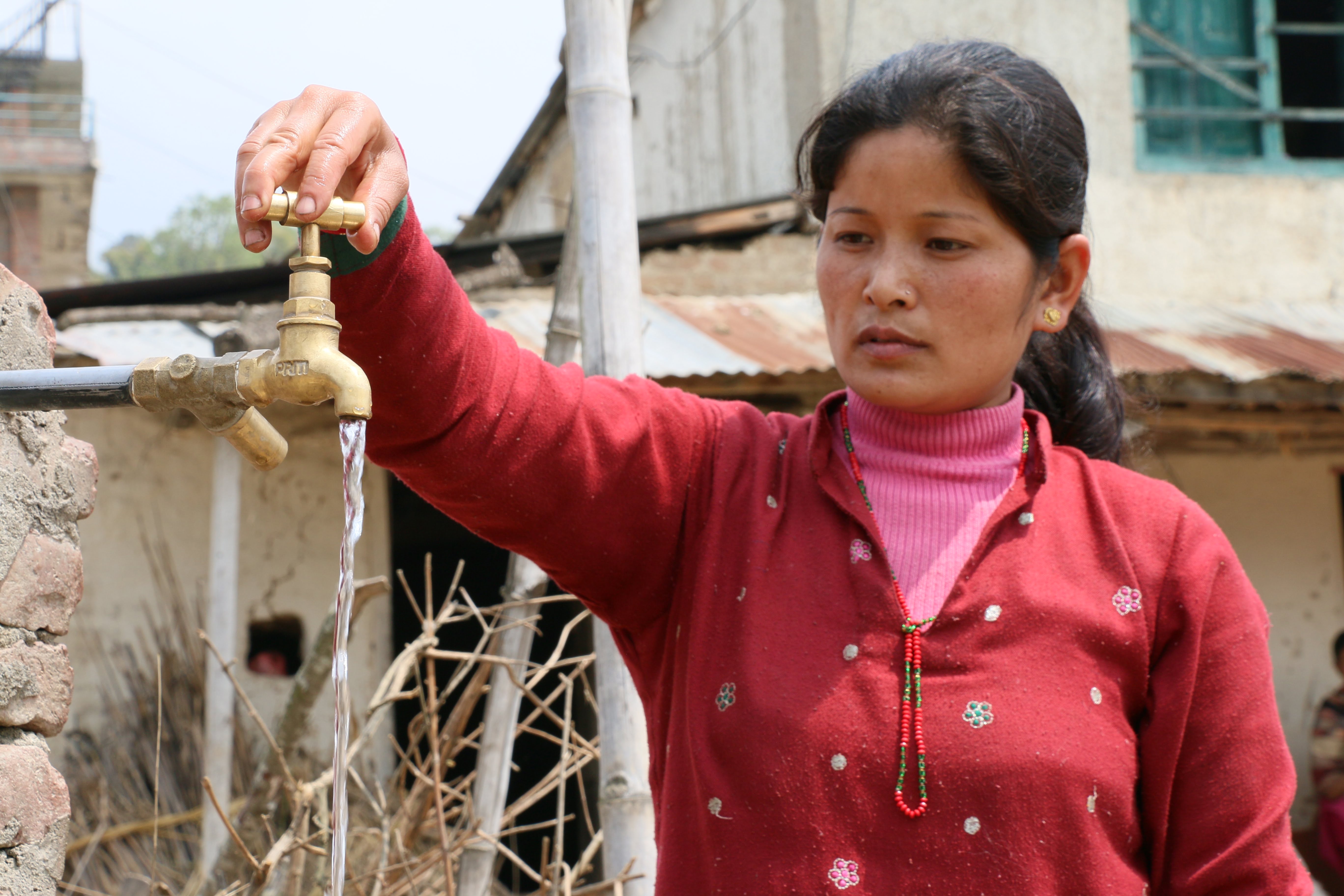Bindu Nagarkoti pulls a blanket over her 10-month-old baby and gets ready for an afternoon full of household chores and agricultural work. The 7.8 magnitude Nepal earthquake last year hit her village hard, destroying homes and drastically cutting access to water.
In a matter of minutes, the earthquake erased decades of progress in water and sanitation. Areas that had previously seen the construction of newer, better taps, pipes, and wells, are now cut off completely from water. Communities that had finally eradicated open defecation before the disaster returned to the old ways of going to the bathroom out in the open, as toilets lay in ruins.
“It’s even difficult to get one pot of clean water now,” Nagarkoti says. “Now, we can only get water from a shared tap for one hour a day, and there’s a line of people,” she says. Nagarkoti and the others line up at 6:30 am to take turns filling up water from this tap. If someone is too late, or at the end of the line, they’ll have to manage without water that day.
“I need at least two more buckets to clean my baby,” Nagarkoti says, “and even more for washing the clothes.”


Before the earthquake, water flowed out of the tap all day, and local residents could fill up as much water as they needed anytime. Now, Nagarkoti and her neighbors have to make do with an extremely limited supply of clean water and walk a half hour away just to bathe.
The earthquake ruined water and sanitation infrastructure across Nepal’s hard-hit areas. In many communities, water tanks and pipes cracked or completely broke. In some other areas, the infrastructure remained intact, but the disaster shifted the earth. This changed the direction of streams and dried up water sources in certain places.
The earthquake destroyed nearly 5,200 water supply systems and sanitation facilities and 220,000 household toilets, says Ram Chandra Devkota, Director General of Nepal’s Department of Water Supply and Sewage. After the earthquake, around 1 million people had no access to safe drinking water, and about 1 million people needed toilets.
“Our losses and damages totaled about $110 million US dollars,” Devkota says. He estimates the country will need to spend much more than that, almost $181 million, to rebuild water and sanitation facilities. But so far, the government has only allocated $8.4 million. “It is not enough,” Devkota says, “it is just for the starting phase.”
Now, he and others doubt that the country can meet its previously set goals.
“Nepal had a national target of having [universal access to] basic water supply and sanitation by 2017, but we can assume that we’ve gone back,” says Tripti Rai, WaterAid’s Nepal director. “It’s going to be quite difficult to meet those targets.”
Devkota concurs. “It is a big setback for the country,” he says. In some remote areas, people now have to walk two to three hours to fetch water from the nearest source.
This has taken a major toll on women, since they are usually the ones who collect water for their families. Additionally, water and sanitation has a larger effect on women’s health and even girls education. Young women often miss school if there’s a lack of water or toilets when they are menstruating.
“Water affects women because they need to be looking at all of these multiple uses,” says WaterAid’s Tripti Rai. She estimated women in Nepal spend six hours a day doing household work and, on average, almost a third of those hours are spent collecting water. This is valuable time that could be spent on other things.


“Most work involving water, like laundry and cleaning children, is done by women,” says Ratna Ramtel, the recently appointed, and very first woman president of her village water committee in Nala.
The earthquake destroyed Ramtel’s local water storage tank, but she recently inaugurated a new earthquake-resistant, 5,000 liter-capacity tank. The new tank, constructed by WaterAid for about $1,000, will allow women in the village to fill up lots of water more efficiently.
Ramtel picks up her large, gold-colored water pot, called a gagri, and walks a couple minutes from her house to the nearest water tap. She turns on the faucet and a steady stream of clean water fills up her container.
“We’re now ensured a regular supply of water,” she says. “This will give us time to do agricultural work in the fields, and increase our productivity.”
